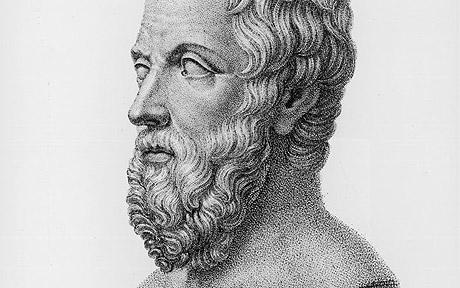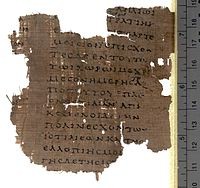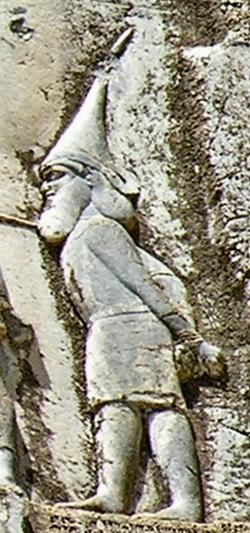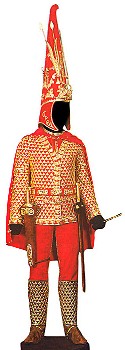by Cam Rea, Contributing Writer, Classical Wisdom

Illustration of the Bust of Herodotus
Earlier this week I came across a quote by Herodotus on Classical Wisdom’s Facebook page. The main theme was “giant gold digging ants.” Sounds fanciful, right? Well, behind every myth is a general truth, and that is something I think we all can agree on. Herodotus states in The Histories book 3.102:
“Besides these, there are Indians of another tribe, who border on the city of Caspatyrus, and the country of Pactyica; these people dwell northward of all the rest of the Indians, and follow nearly the same mode of life as the Bactrians. They are more warlike than any of the other tribes, and from them the men are sent forth who go to procure the gold. For it is in this part of India that the sandy desert lies. Here, in this desert, there live amid the sand great ants, in size somewhat less than dogs, but bigger than foxes. The Persian king has a number of them, which have been caught by the hunters in the land whereof we are speaking. Those ants make their dwellings under ground, and like the Hellene ants, which they very much resemble in shape, throw up sand-heaps as they burrow. Now the sand which they throw up is full of gold.”

Herodotus histories fragment
Understand that Herodotus never went to India or anywhere near India… as far as we know. But, I think his statement speaks for itself, and perhaps even Herodotus was skeptical of the giant gold digging ants. However, I could be wrong?
Saying all that, there may be truth to this story after all. I hereby give to you, the audience, and to Mr. Herodotus, a potential explanation.
They were not giant ants at all, but, in fact, men who looked like ants. To be more specific, they were the Saka (Scythians) Tigraxauda.

Saka (Scythians) Tigraxauda
But before you scoff, let me explain first the location and name of these mistaken ant people.
First, the location of the Saka Tigraxauda was east of the Caspian Sea, and they were found between the provinces of Hyrcania and Chorasmia. The Saka Tigraxauda are also suggested to have been none other than the Massagetae, a people also described in depth by Herodotus, even though not everyone agrees that they were.
However, it is the name that is interesting, and more pertain to our theory. Saka Tigraxauda, also Tigra-Khaud, is said to mean “Saka that wore pointed caps.” Additionally, the word Tigra-Khaud is reported to be a corrupt form of the Sanskrit rendering of “Tigra-kakud”, meaning “pointed projection”, a metaphor for horns.

The “golden man” from the Issyk kurgan, 4th or 3rd century BC.
Back to our Herodotus quote – In the northern Indian province of Kashmir, it was remarked that unnatural sized ants “Tigra-kakud” dug for gold. But this, in fact, could just be Saka, wearing the namesaked horned headdress, that dug for gold and attacked anyone who intruded, just like ants. However we should add that this description of the Saka wearing pointed hats is generic, for most Saka wore pointed hats.
Of course we can not conclusively prove this – and probably it will remain a mystery. Additionally, we can not ascertain what is more likely: giant ants digging up gold or small Scythians mining in northern lands, though personally I am predisposed to the latter. Some folks on facebook have posited that Herodotus’ description instead refers to gophers or prairie dogs, while others have contended that they were in fact camel spiders… either way, it seems that, once again, there may be more to Herodotus’ tales than first meets the eye.









3 comments
wearing pointed hats while mining gold ? hypothesis or hyperbole ?
more useful would be information, based on archaeology, of trade routes connecting Scythian gold artifacts to the Roman world.
On March 26th. you published another article on Herodotus; that article says:
“With time, however, more and more of Herodotus’ accounts have been vindicated. For instance, he claimed to witness fox-sized “ants” in Persia, who spread gold dust as they dug their mounds, something historians and biologists quickly dismissed. But it turns out that there is actually a Himalayan marmot that does this, and the Persian words for “mountain ant” and “marmot” are quite similar. Sounds like another win for Herodotus.”
This is a more sober hypothesis.
Are these ants also the Biblical locusts of Revelation?
Our apologies, you must be logged in to post a comment.